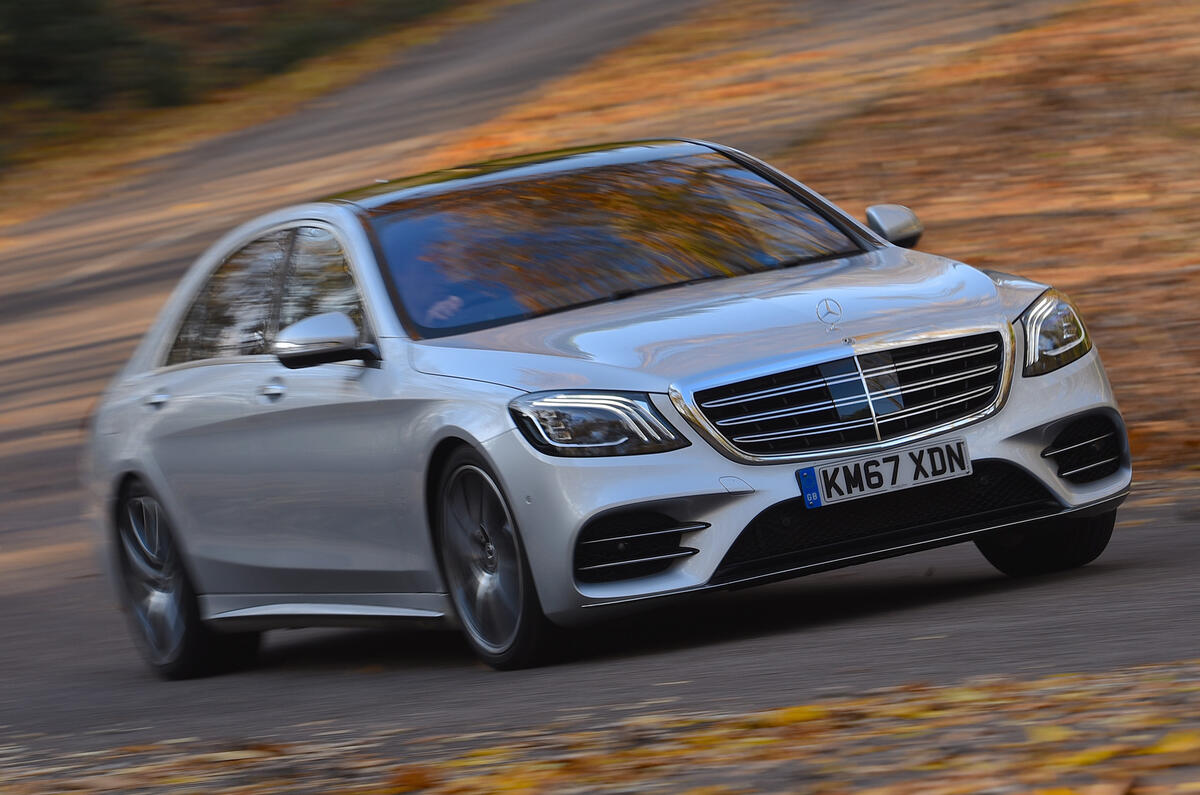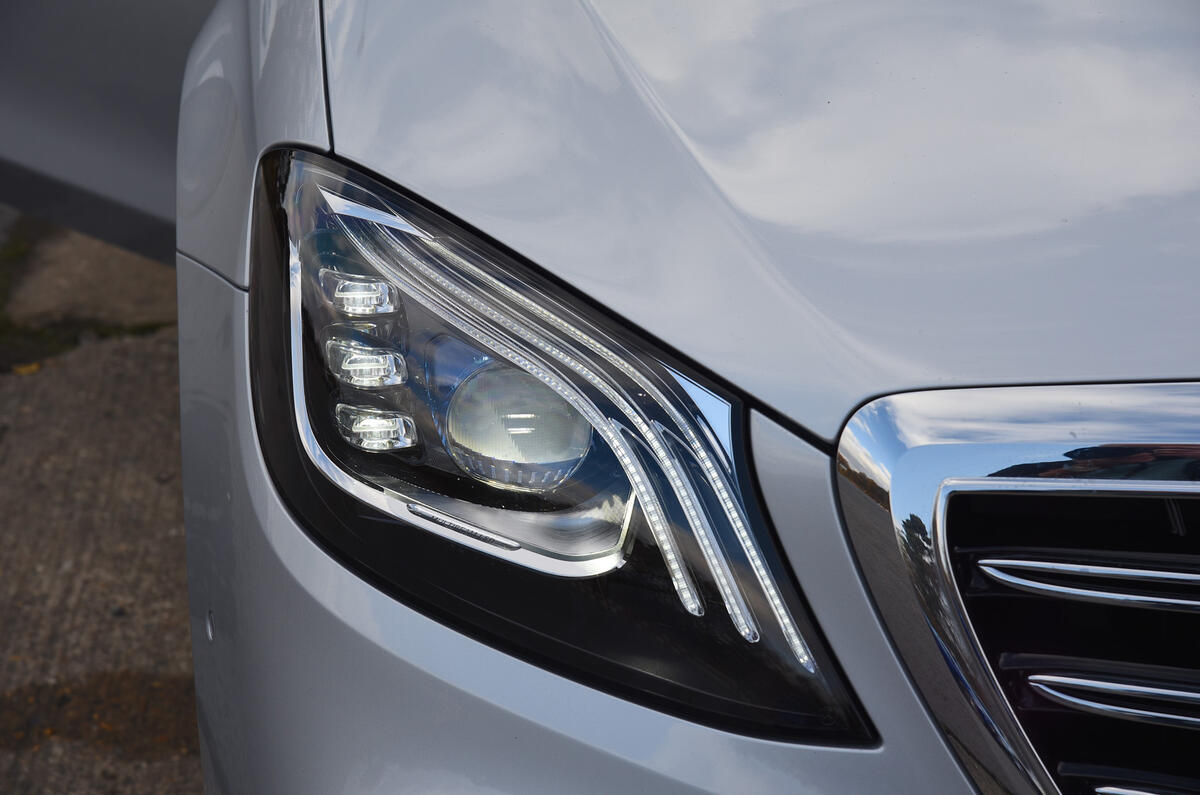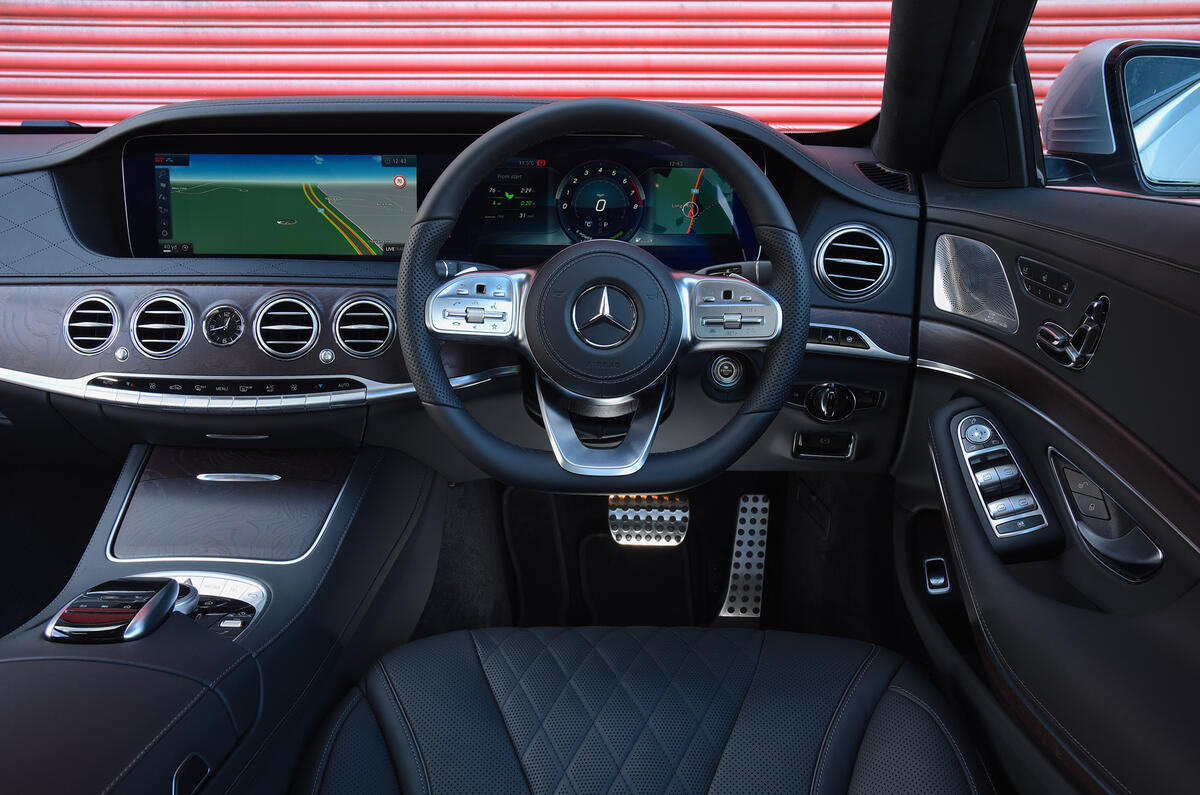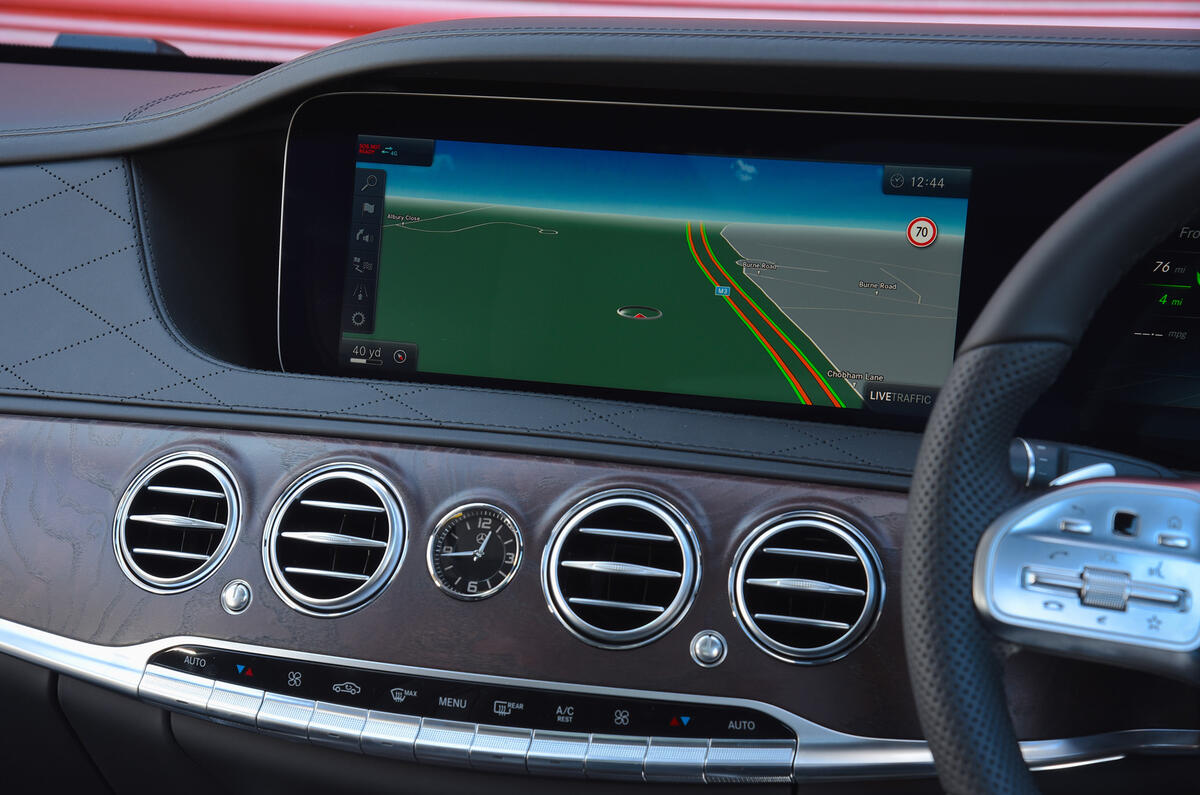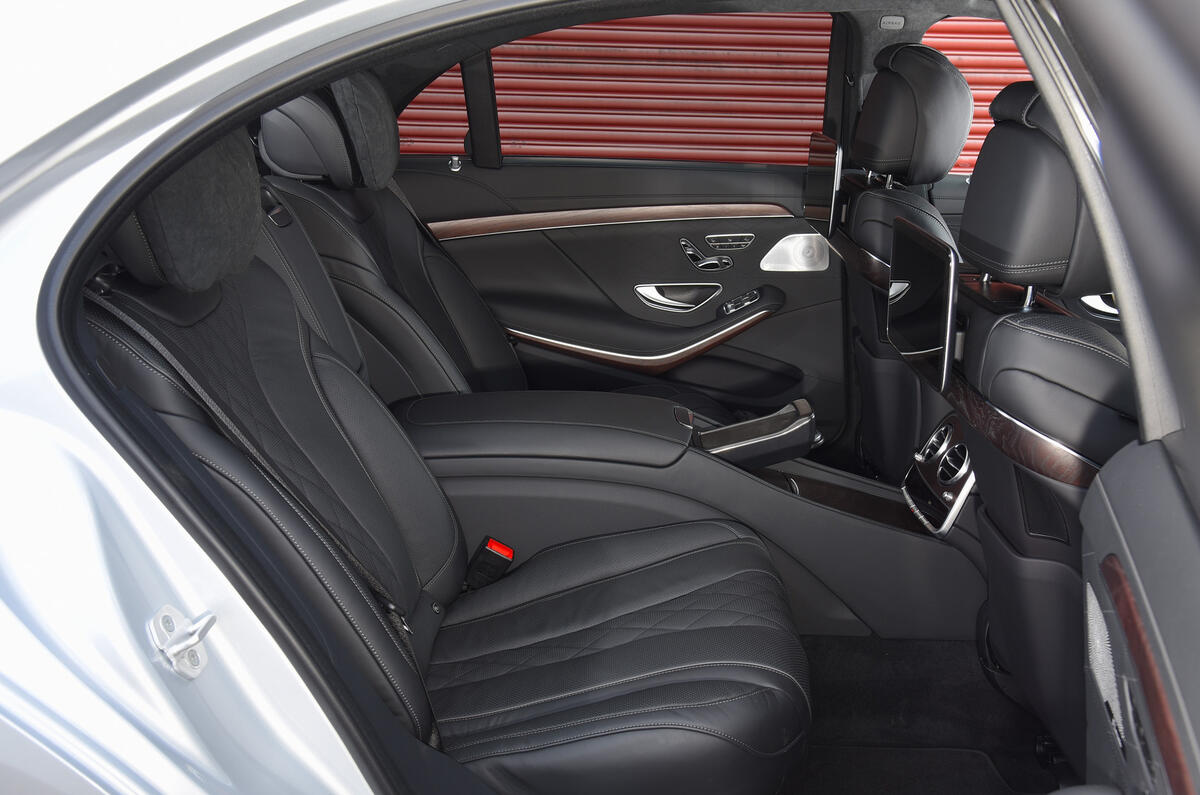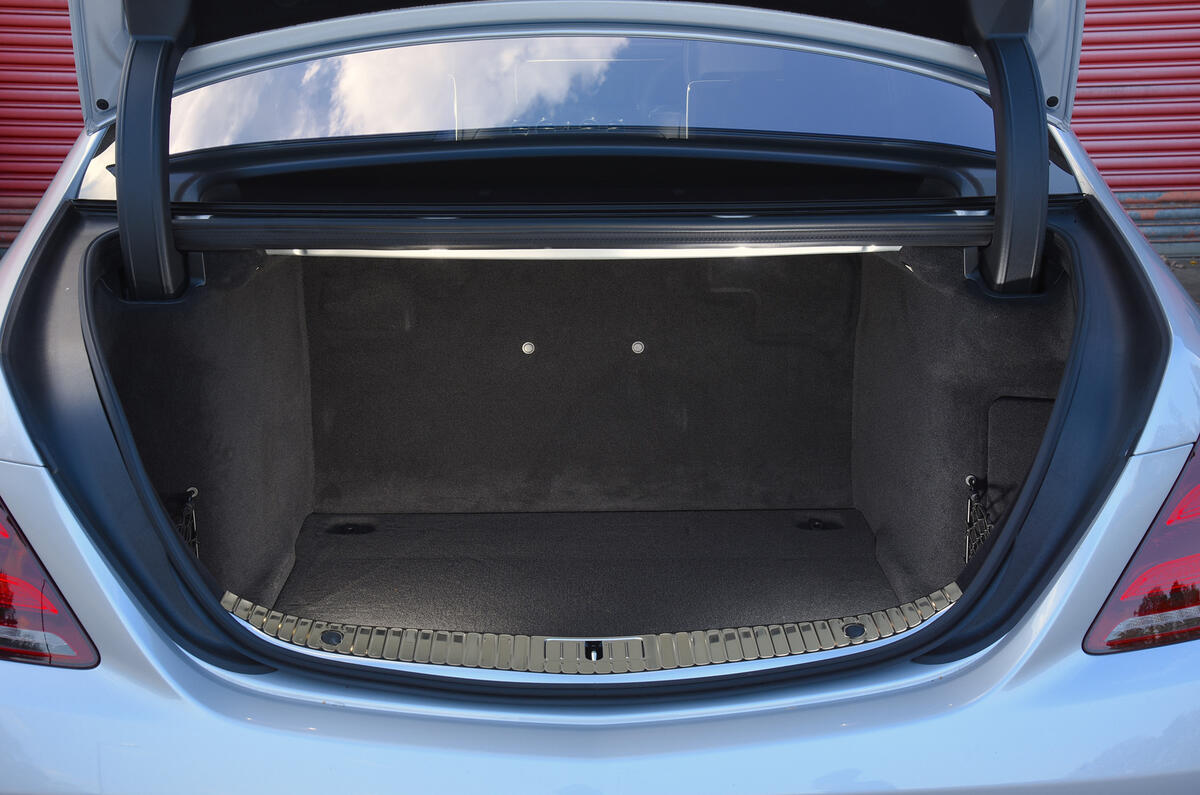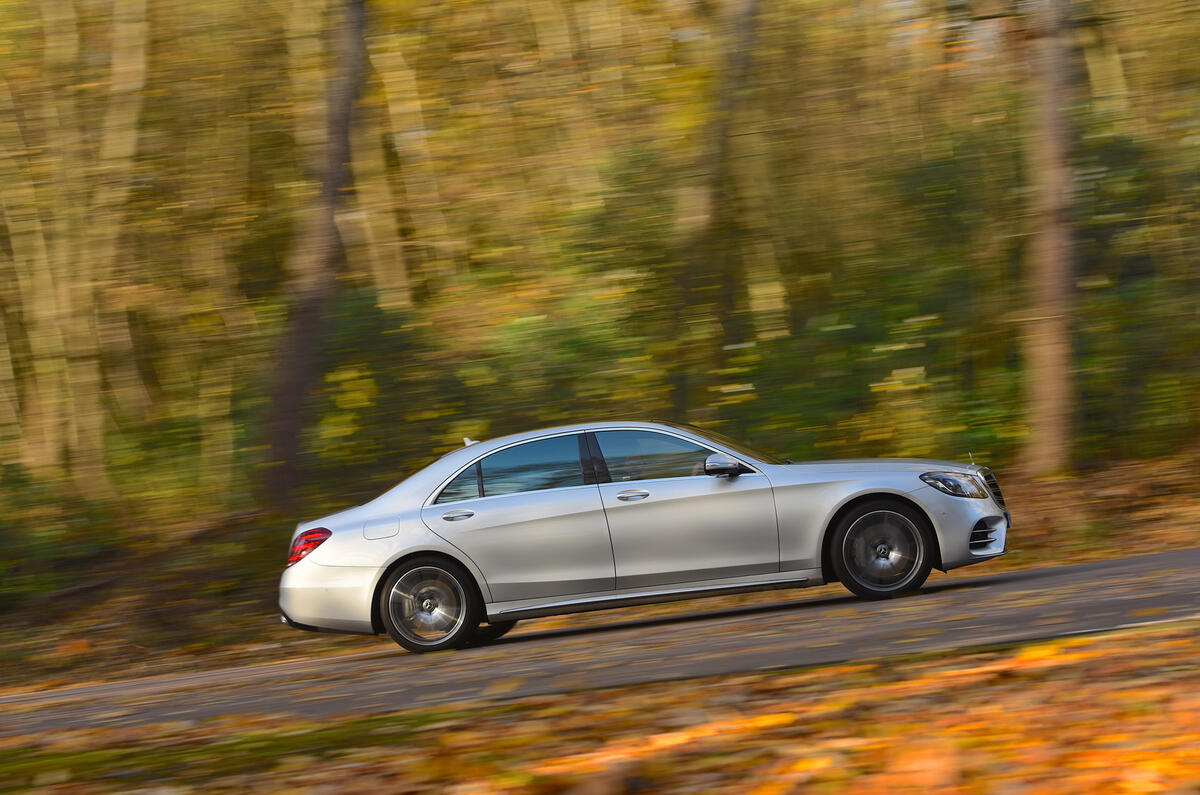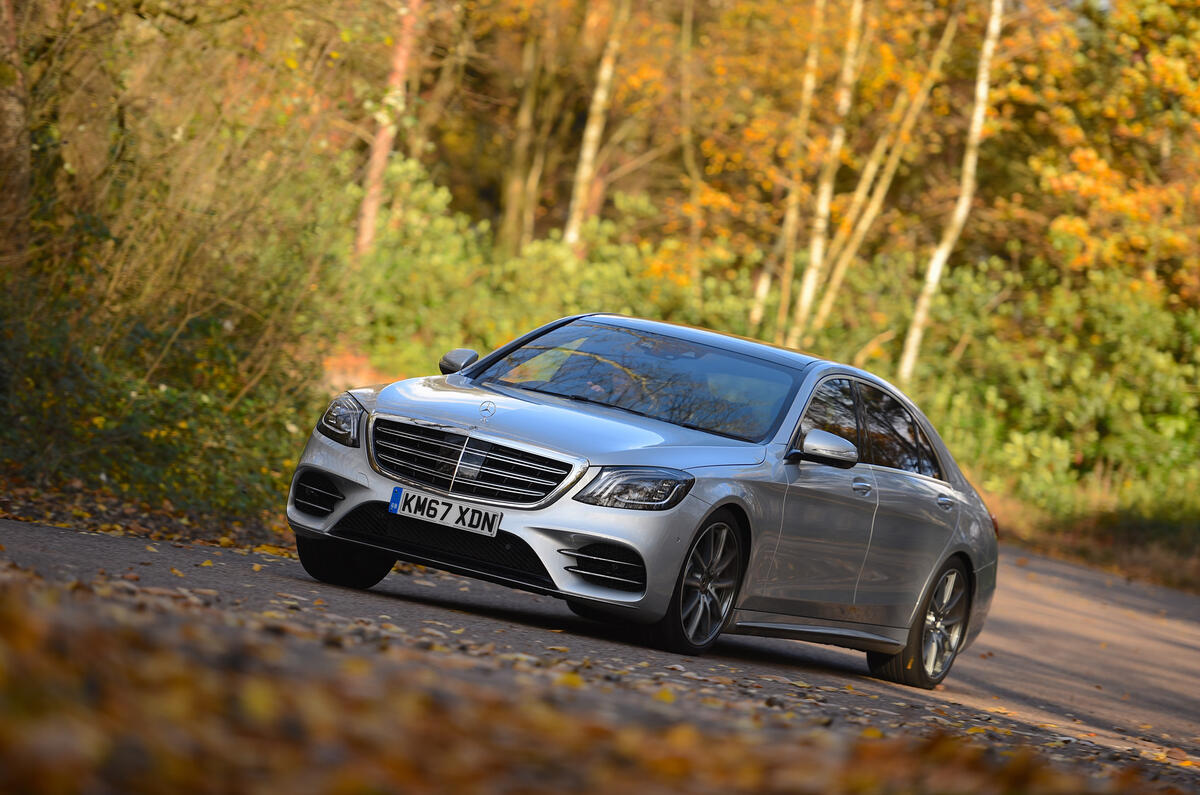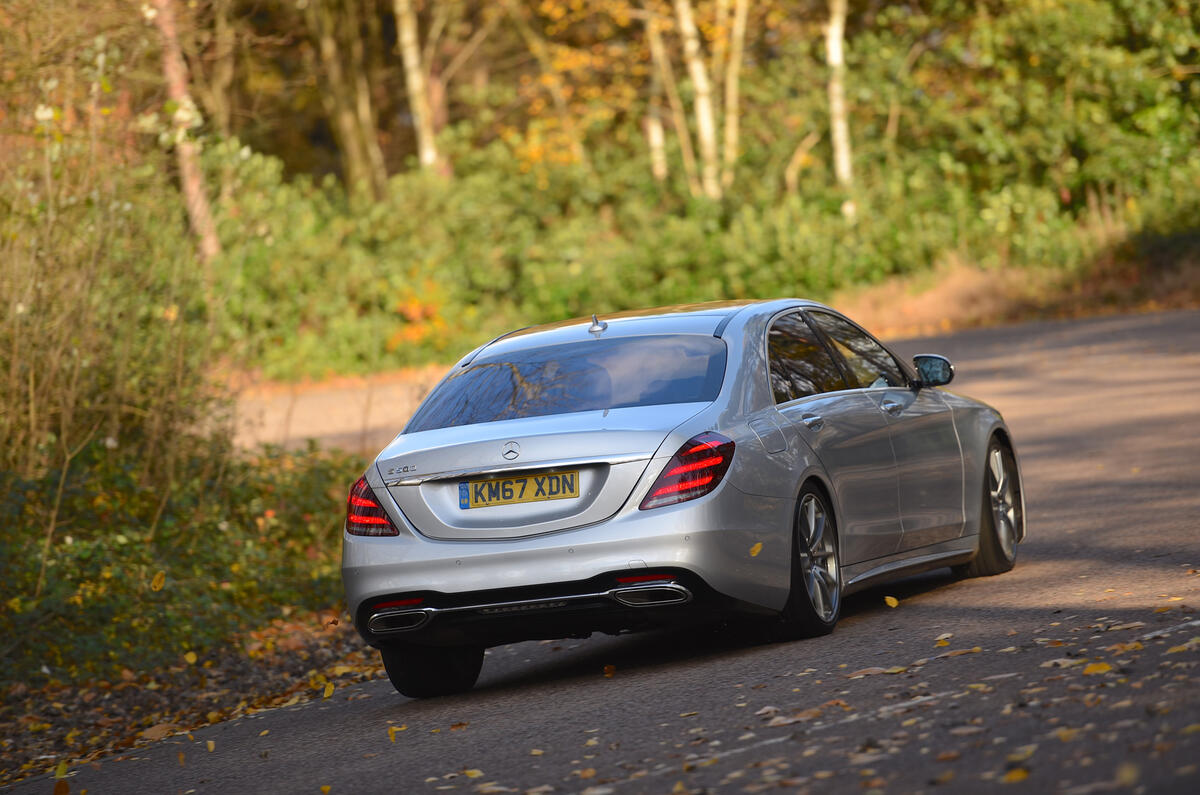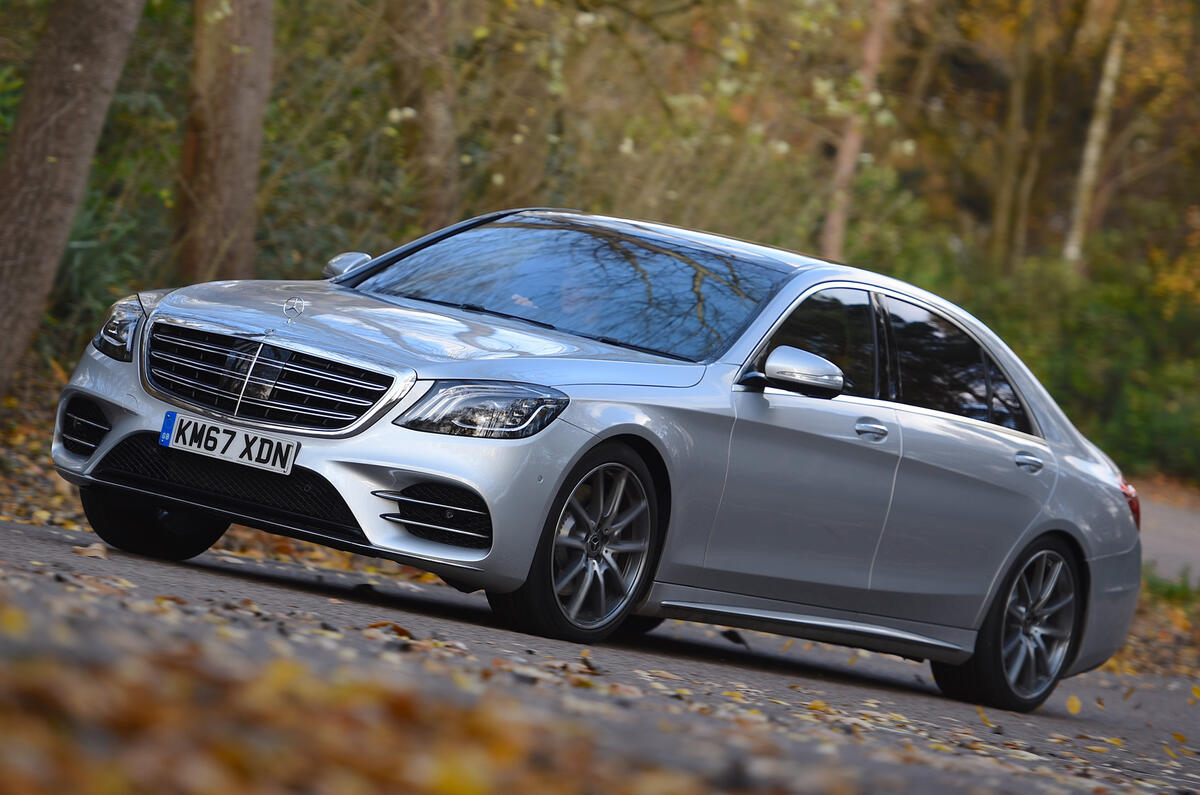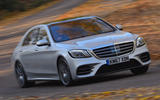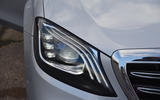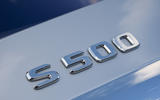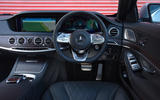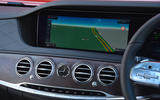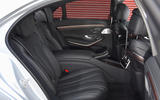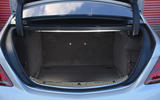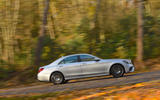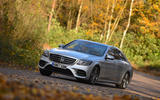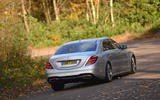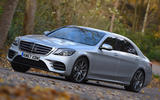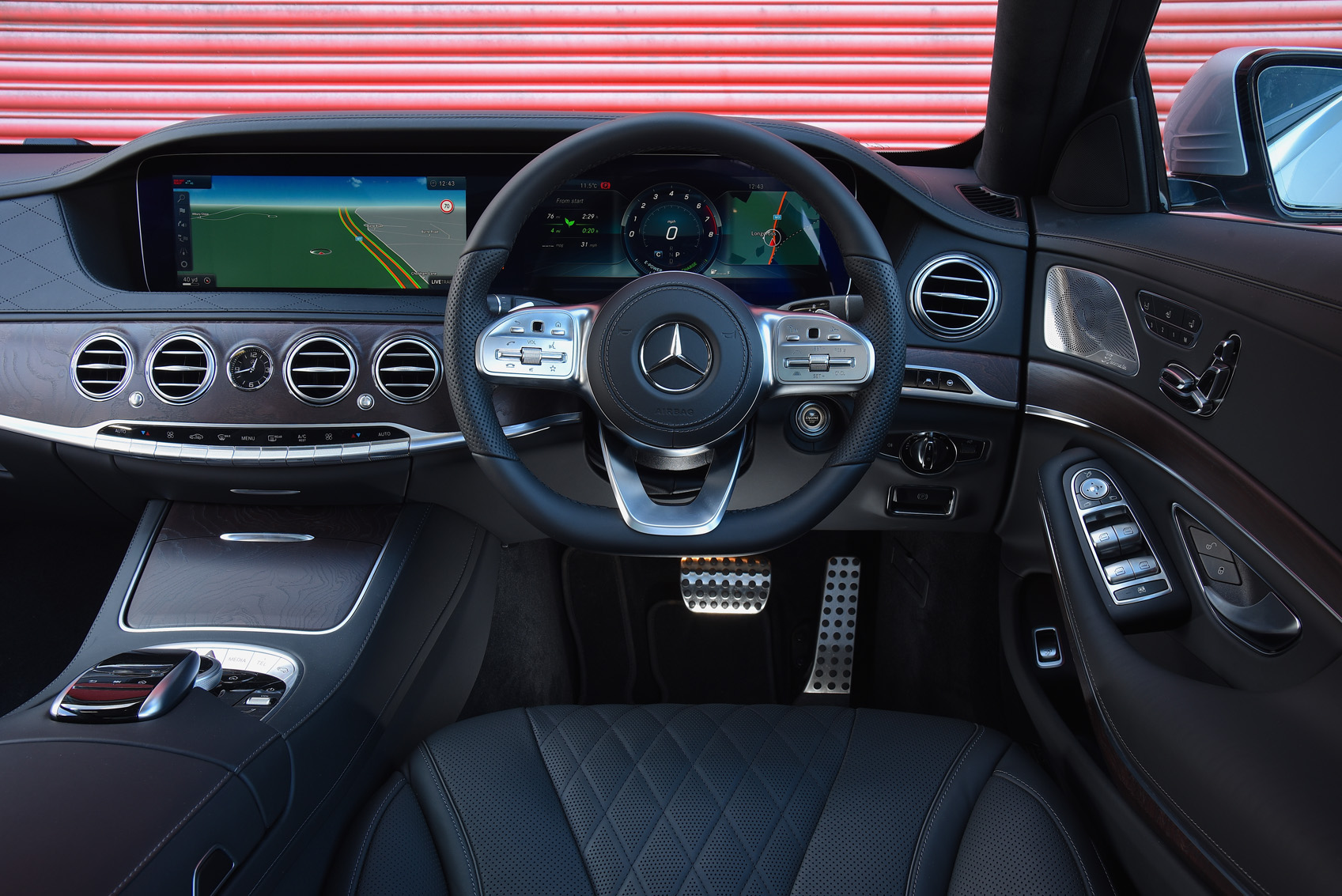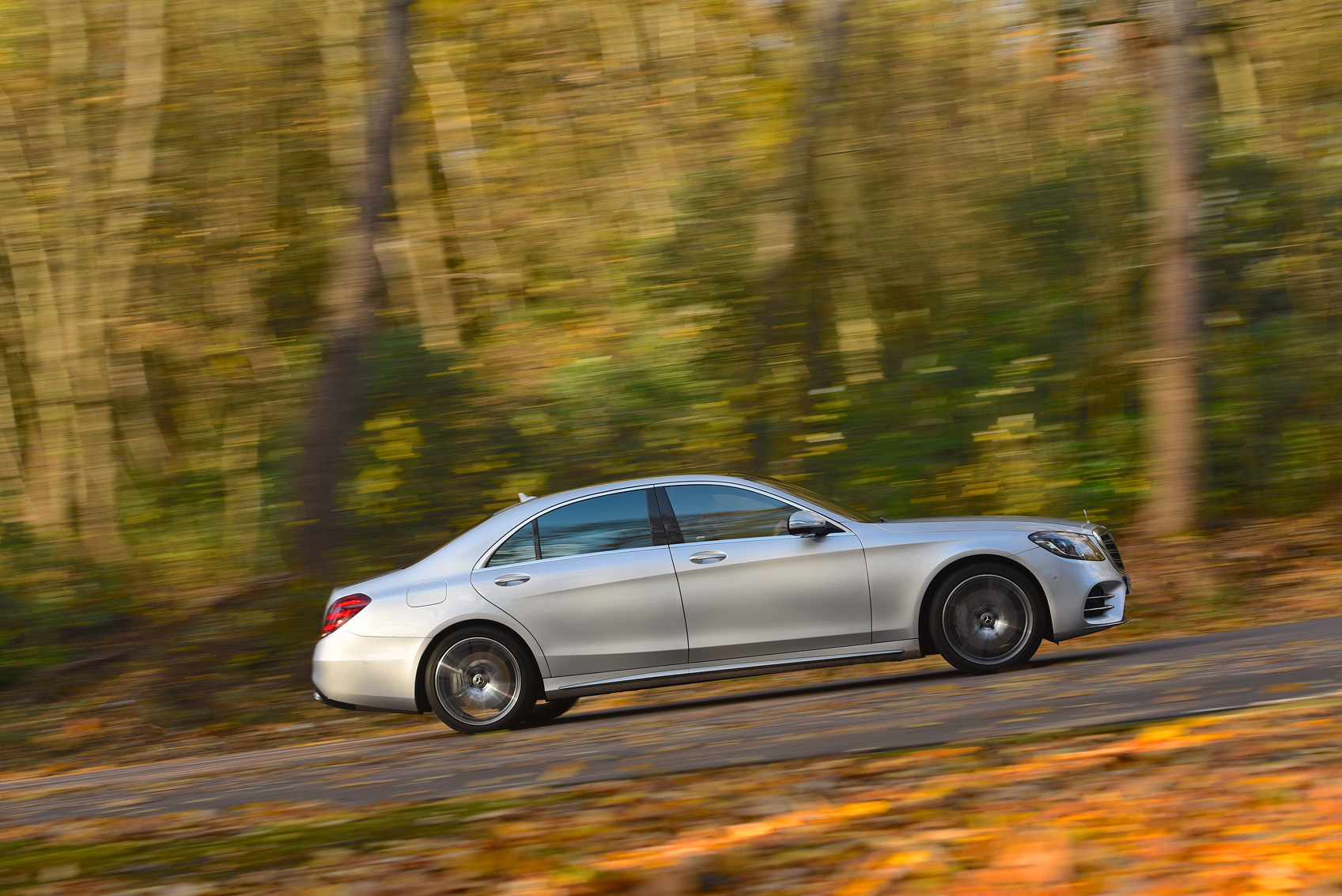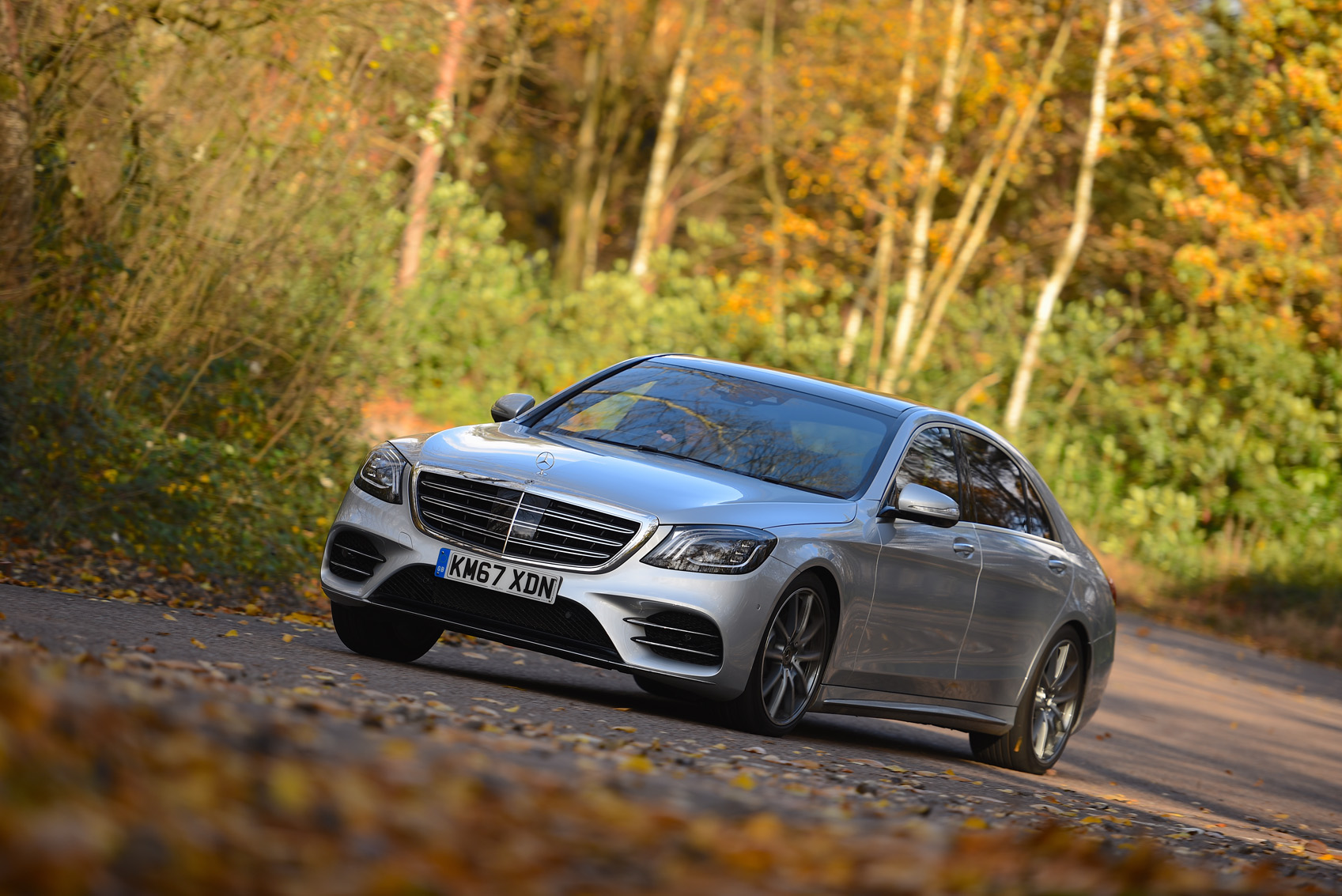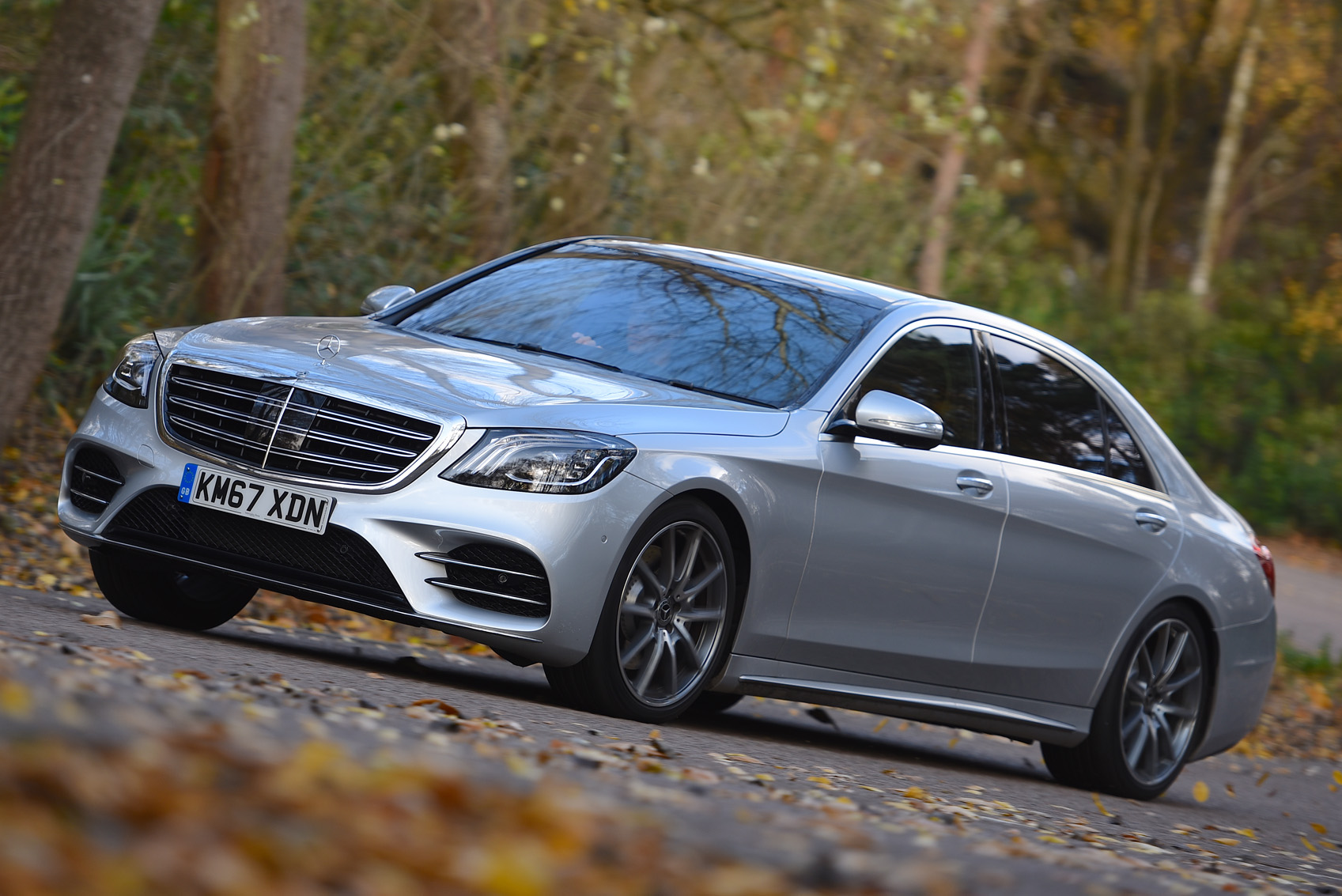The Mercedes S-Class’s interior is everything you expect it to be and more. On space, it offers more than a metre of maximum second-row legroom and 920mm of headroom. Spookily, both figures match what you’ll find in a long-wheelbase Jaguar XJ almost to the millimetre.
The seats are supremely comfortable, the switchgear is solid and metallic, and the leather on the armrests, fascia, steering wheel, doors and seats is meticulously well presented. This is Mercedes sticking it to Audi, Jaguar, Bentley and just about everyone else on material quality, and with glittering success.
But it's the technology that's hidden just out of sight, behind that pudgy layer of cosseting luxury, that's even more impressive.
There are no light bulbs in here, for example, or anywhere else on the car. The cabin has some 300 LEDs in it, the cleverest of which run around the fascia’s primary features as strips of coloured ambient light. They glow in a choice of six colours and make the car even more special to drive at night than it is during the day.
Not only are the seats heated but also the armrests on either side of each occupant. Options include massagers for all four outer seats, as well as pillows for all four headrests, plus an extendable footrest for the nearside rear chair and cooled compartments in both rows.
You can also specify rear-seat entertainment that includes web browsers navigable via a handheld remote, but they would have been much more usable with a touchscreen interface.
A hard drive-based system comes with the standard Comand Online set-up. It has 3D mapping and optional live traffic information, and cleverly blends Google Maps satellite imagery with normal mapping. It can be programmed via ‘Linguatronic’ voice control much more reliably and simply than some systems and is very clear, thanks to the 12.3in screen.
On the standard equipment front, there is only one trim to choose from - AMG Line, which equips the S-Class with 19in alloy wheels, a sporty looking bodykit, LED headlights, adaptive windscreen wiper system, parking sensors, a reversing camera and keyless entry and ignition as standard on the exterior. Inside, there is electrically adjustable front seats, interior LED ambient lighting, wireless phone charging box, and Mercedes' COMAND infotainment system complete with two 12.3in screens, DAB radio, sat nav and smartphone integration.
Those pining for the AMG models, will find dedicated trims for the Mercedes-AMG S 63 and S65. The Mercedes-AMG S 63 gets 20in alloys, AMG-tuned gearbox, a beefy bodykit, Nappa leather upholstery and a Burmester audio system, while the S65 gets a head-up display, a 3D Burmester surround sound system, a Nappa leather headlining and the Executive equipment line pack, which includes backrest adjustable and ventilated rear seats, dual-zone rear climate control and a sunblinds for the rear passengers.
The S600 Maybach, which uses the same engine as the S65, comes with its own equipment list. On the outside there is an adaptive LED headlight system, laminated glass, sliding panoramic sunroof, with automatic tinting, active park assist, parking sensors and 360-degree camera, run-flat tyres, washer jets built into the wipers and adaptive body control system fitted as standard. While inside, all manners of luxury unfurls itself, with climatised front and rear seats, electrically adjustable seating, quad-zone climate control, heated arm rests, Nappa leather upholstery and a wealth of infotainment. This includes Mercedes' Comand system, rear telephone, rear TV screens, TV tuner, and a Burmester surround sound system.
All of this is accompanied by ornate speaker grilles, grooved organ-stop air vent controls, traditional perforated and patterned hides and a two-spoke steering wheel designed to reference big Benzes of the 1950s and 1960s.
It’s a meeting of classic – even retro – design and avante-garde technology worthy of an HG Wells novel. Assuming it’s to your taste, it all seems very rare and special indeed.


